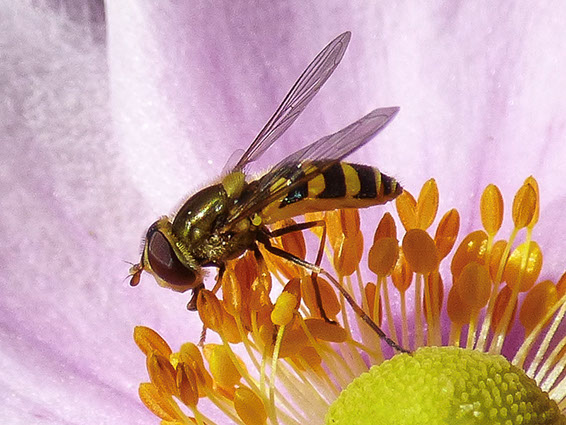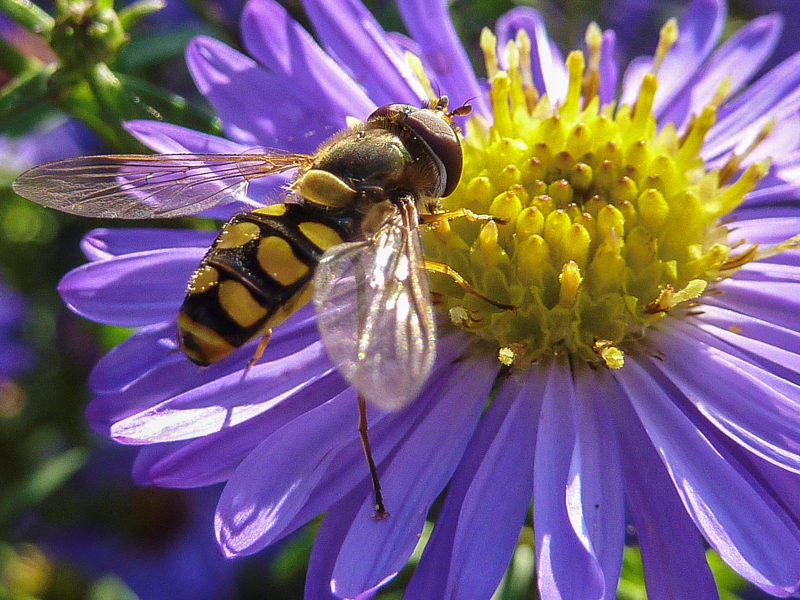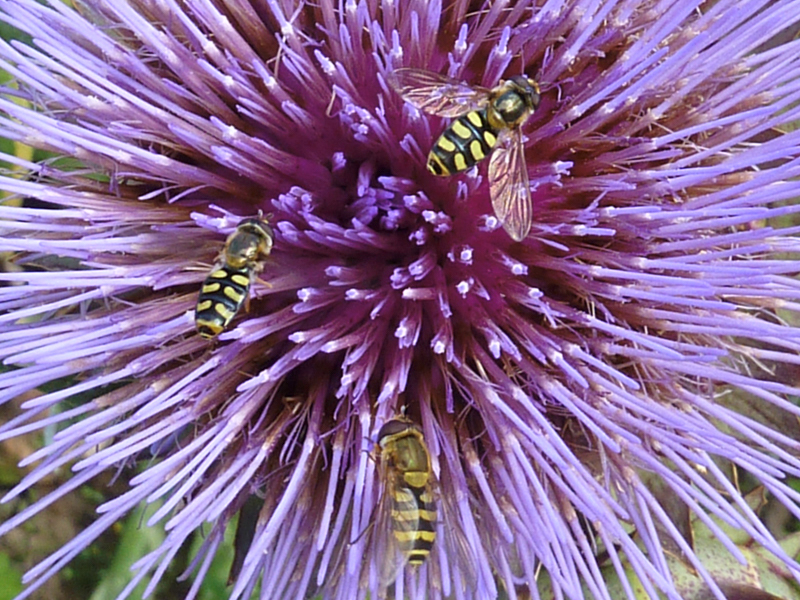

Home
About Us
Allotments
Garden Equipment
Seed Suppliers
Manure Problems
Solve It - Puzzles
Children's Pages
GLA Blog
Weather Blog
School Veg Patch
Useful Links
Weather Blog
Garden Video Blog
Hoverfly
Hoverflies are often mistaken for wasps or bees but are harmless flies. Many use mimicry as a protection mechanism. By imitating insects that have a sting and/or taste unpleasant they fool predators into leaving them alone. Well most predators anyway. This can backfire in the case of those flies that mimic wasps, as at the sight of them those humans who have a hatred of wasps will wage war against them.

The most obvious way to tell whether you are in the presence of a wasp or hoverfly is that a hoverfly does what its name says – it hovers! Bees and wasps don’t have this ability.
There are over 250 different species of hoverfly each with an unmemorable Latin name.

Adult hoverflies feed on nectar, pollen and honeydew (the sticky sweet substance produced by aphids). Different species of hoverfly larvae feed on a diverse range of things including aphids. Some live in stagnant water and eat decaying material. Not all hoverflies are gardeners’ friends as some larvae also feed on plant roots and bulbs.
I think the hoverflies pictured here on one of our cardoon flowers are Syrphus torvus. This species is supposed to be the only hoverfly with hairy eyes. I over-sharpened one photo in an attempt to see the edges of the eyes more clearly and it appears that the hoverflies in the photos do have a hairy fringe on the lower edge of their eyes.

Just like the bees, the hoverflies love the cardoon flowers.
Our Plot at Green Lane Allotments Blog | A Gardener's Weather Diary | School Vegetable Patch Website
© Our Plot on Green Lane Allotments - Please email me if you wish to use any of this site's content